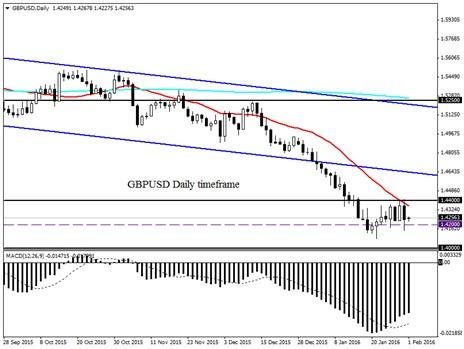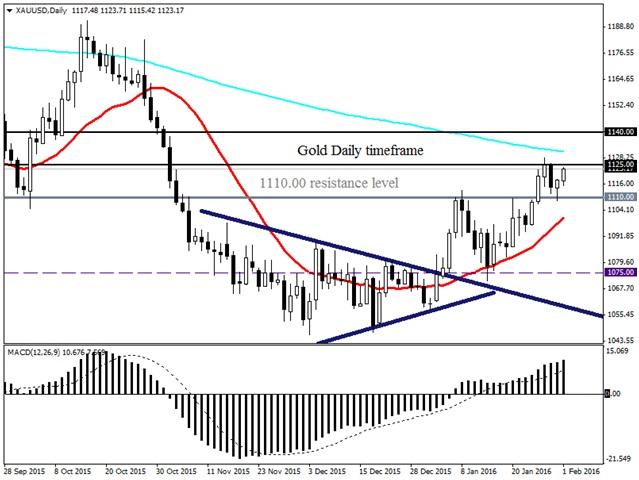Global Markets
The global markets became cautious in the early trading sessions of Monday morning following a batch of soft China PMI reports for January which signaled further weakness in the health of the world’s second largest economy. Both manufacturing and Caixin manufacturing PMI announcements were contracting and this visible deterioration intensified the growing anxieties around the slowdown in economic momentum in China. For an extended period economic data from Beijing has repeatedly followed a negative trajectory and this has compounded the growing concerns that capital outflows may accelerate as the economy continues to slow. Sentiment towards the Chinese economy is heavily bearish and despite the People’s Bank of China (PBoC) pledging to maintain a prudent monetary policy in 2016, this visible deceleration may force the Central bank to unleash aggressive monetary policy in a bid to revive growth.
Speaking of monetary policy, the Bank of Japan (BoJ) shocked the global markets during trading on Friday by unexpectedly implementing negative interest rates in an attempt to keep the economy from entering stagnation. This unanticipated move shows the BoJ’s determination in battling the global woes that have not only exposed its economy to downside risks but further threatened to send the country back into an undesired state of deflation. Although changing the official interest rates from 0 to -0.1% for the first time was quite a significant move for the BoJ, in the medium and longer term such a move has opened the door for the countryto adopt deeper negative interest rates in the future.
Global stocks markets received a welcome boost on Friday as the risk-on trading environment from the BoJ’s unprecedented decision triggered risk appetite which encouraged investors to pile into riskier assets. Asian and European equities managed to claw back previous losses while American equities also concluded positively, despite the disappointing GDP report which showed that the US grew a tepid 0.7% in the fourth quarter of 2015. While short-term risk appetite may be the dominant theme as expectations mount around the central banks expanding stimulus measures to mitigate the turmoil in the financial markets, the ongoing global concernsand overall low confidence towards the global economy point to more downside pressures in the medium term.
UK Manufacturing PMI in focus
The Sterling remains fundamentally bearish and ongoing anxieties around the potential slowdown in economic momentum in the UK economy have left the single currency vulnerable to further losses. Fading expectations that the Bank of England (BoE) may raise UK rates in 2016 due to ongoing global woes have encouraged sellers to attack the Pound, while lingering concerns over slowing UK wage growth and tepid inflation levels have obstructed any recovery in the value of the GBP. Today investors may turn their attention towards the UK manufacturing PMI report which has been on a slippery slope towards contractionary levels, and if the report fails to meet expectations then the bears may be provided an opportunity to send the Sterling crashing as fears intensify around the idea of UK growth decelerating.
The GBPUSD has found some firm resistance at 1.4400 while prices are currently trading below the daily 20 SMA. This pair is bearish on the daily timeframe and a decisive break down below 1.420 may offer an opportunity for sellers to send prices towards 1.400.
Commodity Spotlight – Gold
The vicious movements in the oil markets which havetriggeredrisk appetite continue to generate erratic movements in safe haven assets and this has had a noticeable impact on the price of Gold. Friday’s tepid GDP report for the United States has erased some expectations that US rates may be increased once more this quarter, and bulls Gold salvaged this opportunity to send prices higher. With potential Dollar weakness removing some downside pressures and erratic risk appetite providing an additional foundation for the bulls, Gold may trade $1140 once the $1125 resistance has been conquered. From a technical standpoint, prices are trading above the daily 20 SMA while the MACD has also crossed to the upside. Previous resistance at $1110 may act as a dynamic support which should encourage a further incline towards $1125 and potentially higher.
Disclaimer:This written/visual material is comprised of personal opinions and ideas. The content should not be construed as containing any type of investment advice and/or a solicitation for any transactions. It does not imply an obligation to purchase investment services, nor does it guarantee or predict future performance. FXTM, its affiliates, agents, directors, officers or employees do not guarantee the accuracy, validity, timeliness or completeness of any information or data made available and assume no liability for any loss arising from any investment based on the same.
Risk Warning: CFDs are complex instruments and come with a high risk of losing money rapidly due to leverage. 90% of retail investor accounts lose money when trading CFDs with this provider. You should consider whether you understand how CFDs work and whether you can afford to take the high risk of losing your money.
Recommended Content
Editors’ Picks
AUD/USD could extend the recovery to 0.6500 and above

The enhanced risk appetite and the weakening of the Greenback enabled AUD/USD to build on the promising start to the week and trade closer to the key barrier at 0.6500 the figure ahead of key inflation figures in Australia.
EUR/USD now refocuses on the 200-day SMA

EUR/USD extended its positive momentum and rose above the 1.0700 yardstick, driven by the intense PMI-led retracement in the US Dollar as well as a prevailing risk-friendly environment in the FX universe.
Gold struggles around $2,325 despite broad US Dollar’s weakness

Gold reversed its direction and rose to the $2,320 area, erasing a large portion of its daily losses in the process. The benchmark 10-year US Treasury bond yield stays in the red below 4.6% following the weak US PMI data and supports XAU/USD.
Bitcoin price makes run for previous cycle highs as Morgan Stanley pushes BTC ETF exposure

Bitcoin (BTC) price strength continues to grow, three days after the fourth halving. Optimism continues to abound in the market as Bitcoiners envision a reclamation of previous cycle highs.
US versus the Eurozone: Inflation divergence causes monetary desynchronization

Historically there is a very close correlation between changes in US Treasury yields and German Bund yields. This is relevant at the current juncture, considering that the recent hawkish twist in the tone of the Federal Reserve might continue to push US long-term interest rates higher and put upward pressure on bond yields in the Eurozone.

